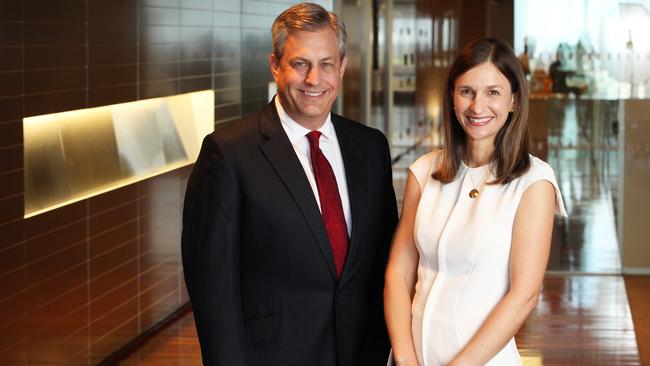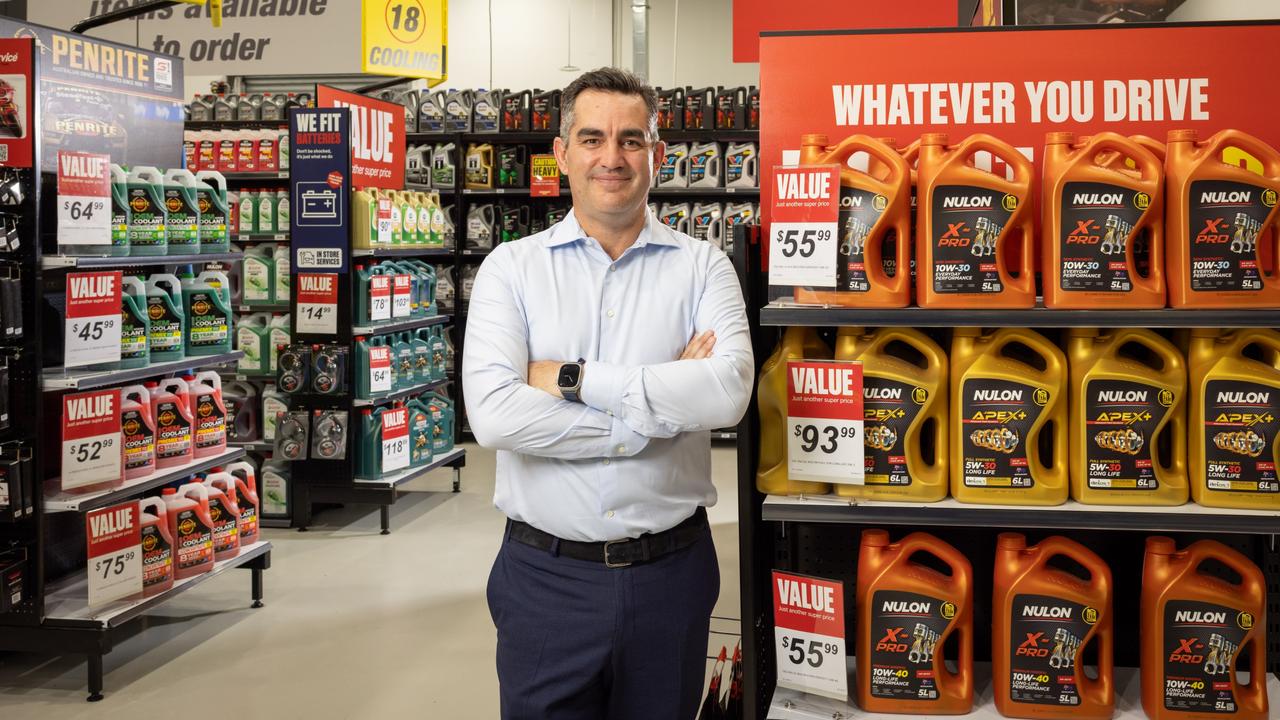Westpac promises gender equality in executive ranks
Westpac CEO Brian Hartzer has committed to having women make up 50 per cent of the bank’s leadership by next year.

Westpac chief executive Brian Hartzer has committed to having women make up 50 per cent of the bank’s leadership by next year — up from 46 per cent at the end of last year.
“We have set the target of having 50 per cent of women in leadership and I fully intend for us to meet that target,” he said yesterday, in an interview on International Women’s Day.
“I am looking forward to being the first major company in Australia that has 50 per cent women in leadership.”
Westpac celebrates its 200th anniversary next year.
Mr Hartzer yesterday announced the appointment of the first executive appointed under Westpac’s Equilibrium program, launched last year to bring mid-level female executives from other industries into the bank.
Former Meat and Livestock Australia executive Michelle Gorman has been appointed as head of small and medium business enterprise lending in the product team of Westpac’s commercial and business bank.
Ms Gorman, who has 20 years’ experience in the food and agriculture sector, including three years working as a lobbyist for the American Farm Bureau Federation in Washington, was one of five mid-career women chosen for the Equilibrium program.
Mr Hartzer, who took over as chief executive last year after the retirement of Gail Kelly, said the program was designed to help boost the ranks of women in the senior management of the bank’s 40,000 staff.
“It had been gnawing away at me for some time,” he said.
“Why aren’t there more women in senior management? I came to the conclusion that one of the contributors was the talent pool problem — a lot of women had been streamed away from financial services for a variety of reasons. They may have reached a point in their career were they might be attracted to it but didn’t know how to get back into it.
“I had been experimenting around the edges by bringing in people from law — hand picking them to work with me in my former role as chief of staff. But I felt there was a need to formalise the program.”
Ms Gorman was chosen for the program a year ago after a trial scheme which involved rotating through different sections of the bank.
She said she applied to the program because she wanted a career change.
She started the year working in the Westpac bank branches in Sydney’s northern suburbs before moving to the Westpac Next service-improvement project and then getting experience in credit risk.
The career shift involved having to learn the technicalities of the banking business.
“In financial services they do speak a different language,” Ms Gorman said. “When I arrived I didn’t follow everything everyone said.”
She said her experience as general manager of industry systems at Meat and Livestock Australia had parallels with running products in banking.
“We provide products for our customers, so I had some transferable skills, but there is also a lot of specific knowledge in banking that you have to get up to speed with quickly.”
Under the program, the five women were provided with a mentor and a “buddy” to help them adjust to the banking business. Another seven women internally were also put on the program.
Mr Hartzer said the aim was to place as many of the women coming through the Equilibrium program as possible into positions at the bank, if they were suitable.
The bank will repeat the program this year as it pushes towards its goal of having 50 per cent women in its leadership ranks.
Other measures include the provision of flexible working arrangements, insisting on having at least one woman on short-lists for senior appointments, using a recruitment agency that specialised in recruiting senior women and unconscious bias training for executives.
“We are very positively disposed to seek out how we can identify high-quality women who can take on these leadership roles in the company,” he said.
“When we recruit externally we make sure we have women on the short-list — and they better be impressive.
“I am not going to hire people who are not good.”




To join the conversation, please log in. Don't have an account? Register
Join the conversation, you are commenting as Logout